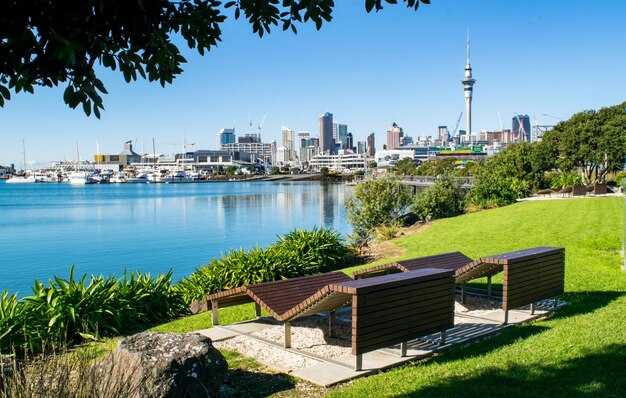Book a 7-day Welcome Week now to set a solid foundation for your stay in Sydney. This plan keeps you involved with locals, covers the city’s best venues, and secures practical tips for food, transit, and safe exploration.
Here you’ll meet many peoples from around the world and get tips from locals. Come with an open mind, a map, and an Opal card, and you’ll find close connections between neighborhoods like Circular Quay, The Rocks, Surry Hills, and Darling Harbour. This week keeps you straight on track while you tour by foot, ferry, and light rail.
Day-by-day snapshot: Day 1 Circular Quay and The Rocks with a harbor sunset and a bite at a local venue; Day 2 Bondi to Coogee coastal walk with a coffee stop at a beachside cafe; Day 3 Darling Harbour, Chinese Garden of Friendship, and a riverside dinner; Day 4 Taronga Zoo ferry ride and a stroll through Neutral Bay; Day 5 Barangaroo Reserve, Pyrmont markets, and a seafood dinner at Woolloomooloo; Day 6 Paddington markets or a Royal Botanic Garden stroll; Day 7 a quiet farewell walk and a final meal at a 7-day Welcome Week partner venue.
For families and solo travelers, the plan emphasizes natural spaces, water views, and bold food experiences. Keep an eye out for frogs in small wetlands near the city–these creatures remind you that life here blends urban energy with nature. The week features many venues with diverse cuisines, from modern Australian to Asian-fusion plates, so you can try something new every day and still stay within budget.
For business visitors and students, this schedule offers efficient mornings at cafes and quick afternoon tours that spare you long commutes. The 7-day format helps you build practical routines, meet locals, and feel like a citizen of Sydney from your first week. The foundation you lay here makes it easy to return for dinners with new friends, and it keeps your plans flexible to adapt to weather or events.
As you wrap up, collect tips from partners and locals about the best food venues, hidden parks, and transport quirks. The Welcome Week delivers a hands‑on start here in Sydney, helping you come to know the city, its peoples, and its rhythm–even on rainy days.
Airport Arrival to City: Transfer options, costs, and timing

Take the Airport Link rail to the city for speed and value. From Sydney Airport (SYD) to Central Station the ride takes about 13 minutes; trains run every 4–8 minutes in peak and roughly every 10 minutes off-peak. Use an Opal card or contactless payment; fare from the airport to the city typically sits in the AUD 15–20 range per person. This regular service aligns with a 7-day Welcome Week, with easy drops at Central, Town Hall, or Circular Quay for immediate touring or a first surf session.
Taxi and rideshare options provide door-to-door convenience. At arrivals, taxis queue at the curb; typical CBD trips cost about AUD 40–60 and take 15–25 minutes, depending on traffic. Rideshares (Uber, DiDi) offer similar timing and often lower rates during off-peak hours, roughly AUD 35–60 to central neighborhoods. Both handle luggage well and suit a couple or small group aiming for a smooth start.
Shuttle buses and private transfers give predictable pickup windows. Shared shuttles run around AUD 18–25 per person with fixed schedules, while private sedan or SUV transfers start around AUD 90–140, offering a faster, more private ride with direct drops to your accommodation. Booking in advance minimizes waiting during peak arrival windows.
Car rental is ideal for a touring mindset. Airport desks operate in all terminals; planned driving lets you reach harbour islands and coastal spots with flexibility for sunset sessions or weekend trips. If you opt for wheels, use your card for tolls and parking, and map routes to the Whitest sands along Sydney’s coast. For marine exploring, a car supports quick day trips to shorelines and bays, and easy coordination with workshops and sightseeing. Some harbour venues feature animals and specimens, including marine life, perfect for a short first-day stop before continuing your 7-day program.
Options at a glance
Rail: fast, cost-effective, and regular; best for solo travellers or pairs. Taxi: door-to-door convenience, comfortable with luggage. Rideshare: value and simplicity, often cheaper at certain times. Shuttle: fixed, predictable for groups. Car rental: maximum flexibility for touring and islands access. All routes connect to the 7-day Welcome Week program, with information desks ready to assist and provide up-to-date schedules.
Smart arrival plan
Bring identification and your 7-day information sheet. Tap your Opal card at entry and exit points. If you travel with pets, plan for harbour stops to visit animals and marine facilities; some venues showcase specimens and offer family-friendly workshops. For a couple or small group arriving together, pre-booked private transfers save time and reduce hassle. Use ferries to reach Cockatoo Island and other harbour islands, then return to the city for a museum visit and a quick look at Whitest sands on shorelines. Keep a note of schedules from the information desks, and consider booking a touring package to maximize your first days and set a smooth pace for the rest of the 7-day stay.
Connectivity Setup: SIM cards, eSIM choices, and data tips
youll have data today by securing a local SIM or activating an eSIM before you land in great sydney. This keeps maps, rides, and your city tour running from the moment you step out of the airport, so you can start exploring right away.
Choose between a physical SIM at the airport station or an eSIM you can enable on your phone. For cheap options, compare prepaid plans at the airport station or online prior to your arrival; look for 6-8 GB for a 7-day Welcome Week to cover navigation, messaging, streaming, and social uploads.
eSIM choices and setup: Check device compatibility (iPhone XR and newer, most Androids support eSIM). Once you pick a plan, tetepare the QR code or activation details before departure. On iPhone, Settings > Cellular > Add Cellular Plan and scan. On Android, Settings > Network & Internet > SIM cards > Add plan and follow prompts.
Data tips practical: download key maps offline, enable data-saving modes, and limit background data for apps you don’t need. If you’re traveling with elder companions, share a single plan to stay connected during group activities and keep voices in the loop. If you stroll by parks where animal life and even occasional wildlife sightings happen, your data helps you stay aware of weather and timings. When you visit a science center with dinosaurs, use your plan to check showtimes without losing connection. If you lose service in remote lands or at night, switch to cafe Wi‑Fi for essential updates and keep your tour mates informed. If you walk along harbour paths with sand beneath your foot, your data ensures you can find your way back to the group. This setup also makes future trips easier.
Public Transit Basics: Opal card activation, top-ups, and optimizing routes
Activate your Opal card online today by linking it to your account. This simple step lets you manage top-ups, view your journey data, and protect against loss.
Opal cards are available at Newsagents, 7-Eleven, Coles Express, Sydney airport, and via the Opal portal. In july, crowds at transport hubs rise, so plan ahead to avoid queues and keep your plans flexible.
Top-ups come in several options: online top-ups tied to your banking card, top-up machines at stations, and in-store top-ups at participating retailers. Enable auto top-up to keep your balance ready; when the balance dips, you can click to top up and keep moving. For many participants 和 members, this approach helps you manage data on your trips and plan your future 旅行。
Optimizing routes: Tap on at entry and tap off at exit to track fares and use the Opal app to compare options by time and walking distance. A CBD-to-Pacific Harbour style trip may combine train, bus, and a short walk, which often saves heaps on fares. If you see a route with fewer transfers, that usually wins in time. Researchers and participants share patterns to help you choose faster options, and you can enjoy walking segments to discover treasures along the way, like a cool cafe near your house or a pond where frogs greet the morning crowd. Your future trips become smoother when you click through route choices and plan ahead, so your passion for great experiences in Australia shines in every ride.
Where to Stay: Choosing the Sydney neighborhood for a first-week stay
Neighborhood picks at-a-glance
For a first-week base, Surry Hills or Paddington offer handy access to Welcome Week venues, a stellar mix of cafes, parks, and comfortable stays. Central Station is within reach for quick hops to Circular Quay, and regular transit keeps evenings smooth. Surry Hills features well-equipped apartments with kitchens, ideal if you need a flexible setup for kids; many hosts provide linen and Wi‑Fi, so you can swap crowded hotel days for a quieter home setup. Paddington offers leafy streets, tasteful terraces, good CBD access by bus or a short walk, and plenty of cafes to fuel early mornings. The Rocks presents a walkable harbor quarter with fast ferry links to weekend explorations; a local guide revealed that the Rocks is a strong base for first-week schedules; the Powerhouse Museum and a museum are a short ride away, turning downtime into easy learning moments. Bondi Beach adds a beach rhythm with whitest sands and a scenic route into the city, offering a refresh between city days; travel to the hub is longer during peak hours. A torres project nearby runs kid-friendly workshops that appeal to families, and prizes for participants in Welcome Week activities add a light, motivating touch. Sydney hosts a million visitors each year, which translates into many dining options and parks that pair with nature trails for brisk morning walks. If you need quiet space for work or study, look for places with desks and reliable Wi-Fi; many hosts provide coffee or tea basics and may offer drinks credits on request. The station front areas keep you close to transit, groceries, and a few coffee spots to recharge after long days. Guests liked this balance, and many requests were met quickly. Hardworking travelers value accessible transit and quiet workspaces, so seek hosts who note desk setups and late-check-in options.
Smart booking tips for a comfy first week

Choose a base within walking distance of Central Station or Circular Quay to minimize commutes and keep you close to Welcome Week action. A kitchen helps you manage breakfasts and snacks between sessions; flexible cancellation policies are a plus when flights times shift, and good setups also cover other essentials. Look for family-friendly layouts if you’re traveling with kids; check crib availability, safe stair gates, and quiet rooms for rest. If you want education resources, pick a place near a library or a museum-minded neighborhood; knowledge programs and language clubs are often available locally. For flights arriving late, a CBD base reduces night transfers; if a beach vibe appeals, Bondi or Coogee options work, though plan longer commutes to the core events. Read reviews to gauge practical details like late check-in, parking, and what amenities were provided; this helps you know what to expect and which hosts deliver a smoother stay.
Iconic Sights in a Week: Harbour Bridge, Opera House, and Circular Quay with smart viewing spots
Start with a dawn view over the Harbour Bridge from the Pylon Lookout; having a compact telephoto helps you compress the Opera House sails against the skyline. Just after, rotate through Circular Quay to take in the sails from Bennelong Point and the lawns along the water, taking several angles to keep your shots fresh.
In sydney, this plan works well with laneways and harbour venues that break up long views. There are various viewing spots around Circular Quay, The Rocks laneways, and the Botanic Garden grounds, so you can mix activities like a quick Rocks coffee with a ground-level stroll. Working travelers will appreciate a short, curated loop you can complete in a morning, then jump into a dinner with views that balance city life and harbour calm, together with a few amphoton-worthy moments to shoot.
For a balanced day, include a coastal detour: a short ferry ride to Manly or a Bondi detour to catch a reef-side walk and, if the timing fits, a quick surf. You’ll tour back to the quay area, taking photos from ground and water levels, then take this loop back to Circular Quay–taking your time to frame sails against the water and skyline, and collecting shots you’ll like back home. Taking this approach helps you cover the iconic trio without rushing.
Evening options mix dinner and skyline service at several venues along Circular Quay. The Opera Bar, nearby waterfront restaurants, or a rooftop at a hotel will present a perfect view while you sip a drink and watch the sails. These venues will welcome you with friendly service and easy dining, just the setup for photos that feel natural rather than staged. If you want more input, join a short photography workshop in The Rocks or at the Botanic Garden; you’ll gain tips, meet like-minded people, and leave with shots that some liked most from the week, then share them with friends who will be impressed by your progress.
| Spot | Best Time / Angle | Viewing Tip | 访问 | Notes |
|---|---|---|---|---|
| Harbour Bridge Pylon Lookout | Dawn (6:00–7:00am) with Opera House silhouette | Stand on the southern side for a wide frame; try a telephoto for sails | Walk from Circular Quay; short climb | Iconic first-light shot; quiet moments prevail |
| Bennelong Point / Opera House Forecourt | Golden hour (5:30–6:30pm) | Frame sails with ferries crossing the quay | Path from Circular Quay; steps to lawns | Classic angles; great for silhouettes when wind is calm |
| Mrs Macquarie’s Point / Botanic Garden Grounds | Mid-morning or late afternoon | Panorama across the harbour including sails and water | Short walk from Circular Quay via Farm Cove | Ideal for long exposures and wide horizons |
Food, Drink, and Social: Budget-friendly dining and local meetups during Welcome Week
Arrive with a light suitcase; Sydney lands you in a city where a budget lunch is easy. Head to Chinatown in Haymarket for a main dish around AU$12–15 and enjoy a walk to the centre within 10 minutes. The tourism buzz rises as you arrive, and you make the day’s plan by pairing affordable meals with casual meetups that fuel your energy for sessions and walks.
A practical approach keeps you comfortable all week: map a few reliable spots, then wander to new options between events and classes. Perhaps you’ll discover hidden gems behind the busy streets, and you’ll learn to navigate busy queues without stressing your timetable. Within the week, you’ll find meals that suit a student budget and still leave time for socializing.
- Chinatown, Haymarket – hawker stalls serve dishes from about AU$12–15; sample dumplings, noodles, and curries, then stroll to the centre for your next activity.
- Newtown, King Street – diverse, affordable bowls and wraps; most mains cost AU$10–14 and the area is a short walk from many campuses.
- Campus cafés and student hubs – look for combo deals (coffee plus pastry or sandwich) around AU$8–12; loyalty programs and Welcome Week specials are common.
- Markets near Glebe and Surry Hills – casual stalls and food trucks offer meals for AU$8–12; ideal for a quick fuel-up between sessions.
For drinks and social spaces, mix caffeine with low-cost options to keep momentum. Coffee runs AU$3–4, and select pubs run happy hours in late afternoon (roughly 4–6 pm) to stretch your budget while you meet locals.
- Amphoton pop-ups around campus sometimes provide free tastings or small bites during Welcome Week–watch notices near the student centre.
- Cafés with student loyalty programs offer comfortable spaces for late planning or meeting someone new.
- Casual lounges in the centre are perfect for chatting with someone new, practicing English, or swapping travel tips.
Social networking during Welcome Week is strong throughout the year; join Meetup groups and university clubs to connect with others and perhaps find a study buddy or a new friend. A highly recommended move is to attend a campus social after walking through the harbour-side streets; behind the energy of this city’s customs you’ll feel welcomed and inspired.
- University clubs: join a science or sciences faculty group, an arts or language society, and you’ll meet people with shared interests–weekly meetups often happen behind the centre.
- Language tandems and cultural exchanges: great for practicing English, learning local customs, and building friendships.
- Volunteer opportunities and casual gigs: employers often hire students for short shifts during Welcome Week, providing quick earnings and new contacts.
Accommodation notes: some students and families offer demi-pair arrangements or share apartments to keep costs down; these options sit within short commutes from campus. If you’re staying near Cockatoo Island, check ferry times and plan day trips for December crowds. A comfortable apartment close to the centre makes it easier to explore the city, meet neighbours, and settle into routines that last throughout the year.



评论